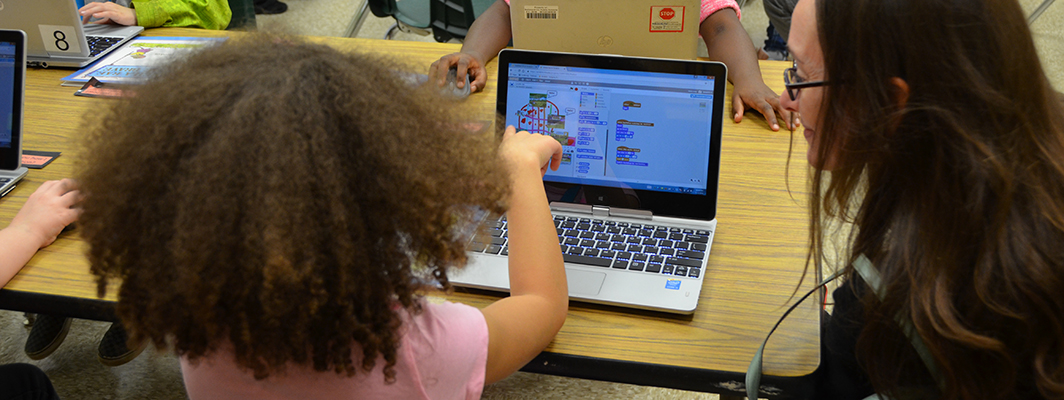
March 26, 2019 | By Dr. L. Robert Furman
While we’ve come a long way from the “grasping at straws” syndrome, educators continue to ponder the worth of many educational technology (edtech) products and struggle with the best and most efficient means of choosing these products. Technology can bring about new learning opportunities, support student engagement, help create a collaborative learning environment, and provide necessary and immediate feedback, among other digital age skills. So how does a teacher find new edtech products suitable for their classroom and determine their value?
The following are suggestions to discover the latest and greatest edtech products available for use in the classroom today. This list also emphasizes and demonstrates the need for standards around edtech product quality to support the field with discovery and selection.
Search engines, such as edshelf or the Educational App Store, are great ways to discover new products that have been used and, more importantly, reviewed by fellow educators. The search engine for edshelf allows you to narrow down your needs based on a variety of options such as subject, platform, and cost.
Teacher blogs dedicated to edtech, such as the Innovative Educator or Edudemic, not only provide the latest and greatest products available for educators, but they also reflect on how other teachers have actually used these products in their classrooms. Reading the posts on these blogs can help you uncover many good ideas.
Attending conferences, while expensive, can help you stay on the cutting edge of edtech. The International Society of Technology in Education (ISTE), for example, has a fantastic conference every summer that highlights the newest edtech products from around the globe. Not only can these conferences expose you to the newest edtech products, they can also reignite your passion for education.
Using your network and social media can also help you find what you need. Many educators, including myself (@drfurman) and my fellow colleagues, are always willing to assist educators in finding the necessary tools for their classrooms and broaden teaching opportunities. You can reach out via your favorite social media platform and ask for their advice and support. Networking and collaborating with colleagues are powerful avenues to use technology effectively.
To find the perfect product, you always need to consider the benefits of using it in an instructional setting. Sometimes technology seems like it will be good for the classroom because it has a certain “cool factor.” This cool factor often encourages students to follow their passions for learning or leads students to a more innovative environment. However, we need to keep the instructional benefits of technology at the forefront of our edtech searches.
Technology was never intended to replace teachers, but rather you should consider technology use as an opportunity to create a collaborative environment that allows students to work together in a more innovative and personalized style of learning. Consider these five factors when selecting edtech products:
What age groups and grade levels are most appropriate for this product? Will this product enrich students? Will this product remediate students? Does this product attend to the needs of our diverse learners by incorporating research-based design features to support learner variability?
What experiences will they gain? As the teacher, what is your purpose and goal for using this product?
Would it work in a flipped classroom format? How about as an Extension activity? Could this product provide a project-based learning experience? Does this product provide opportunities for personalized learning?
In what context would you use this product? Which subject and content areas would this product support?
What digital age skill does it embrace? Why is this product relevant to the learning? Why is using this product better than any other method of instruction?
The success of technology use in the classroom will always rest on the shoulders of the teacher. Ultimately, the teacher must make good decisions when selecting edtech products and then apply best practices to its implementation. However, it’s time-consuming to discover products and, without a standards rubric or clear criteria to assess the quality of products, it is challenging to know how to select high quality products. There needs to be a clear set of indicators created that help a teacher curate their edtech product needs in a quick and concise manner. There are ratings for movies, music, and video games. Why not have a rating system for quality edtech products that will save a teacher’s time and energy in having to trial and error several products in order to find the one that is of a standard and quality we expect as educators.
Technology can open many doors to new and exciting experiences for your students, but you also need to ensure that the edtech products you bring into your classroom attend to the needs of each unique learner to provide your students with the best learning experiences and outcomes.
Keep up with the Edtech Marketplace Today blog series to hear voices from the field share important perspectives on challenges and strategies to improve the edtech market. Visit the Product Certifications website to learn more about the edtech marketplace. Subscribe to Digital Promise’s Action Report to stay up-to-date on their work.
By Jackie Gantzer and Jin-Soo Huh